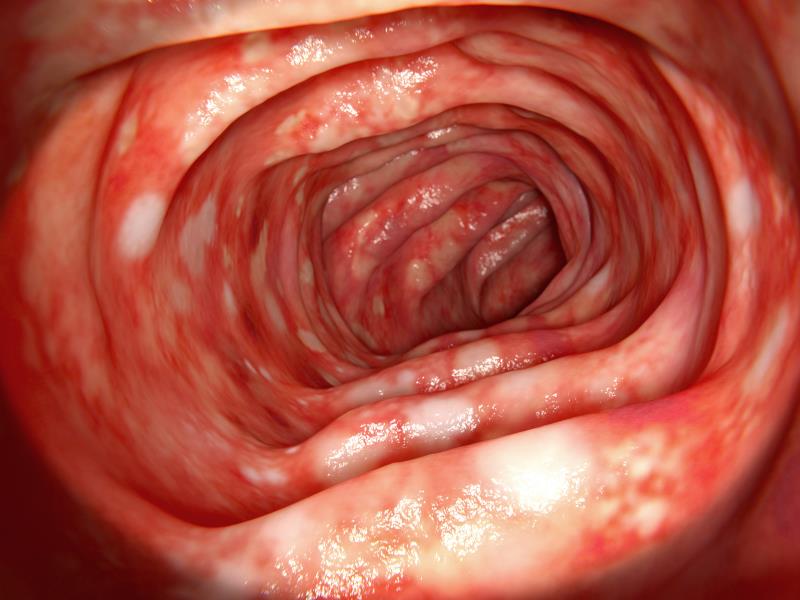
In patients with ulcerative colitis (UC), changes in histologic and endoscopic scores appear to be weakly to moderately predictive of each other, according to an analysis of the HICKORY study presented at the 2019 Advances in Inflammatory Bowel Diseases Annual Meeting (AIBD 2019).
“HICKORY is an ongoing phase III study evaluating etrolizumab in antitumor necrosis factor–experienced patients with moderate-to-severe UC,” said researchers. The present study aimed to uncover correlations between changes in histology and in disease activity measures in this open-label induction cohort.
Of the 97 enrolled participants, 22 percent (n=21) showed resolution of neutrophilic inflammation by week 14, defined as having a Nancy histologic index (NHI) score ≤1, or a Robarts histopathology index (RHI) score ≤3 with a Geboes subgrade rating of 2B.0/3.0. [AIBD, abstract P069]
At the same time point, 23 percent (n=22) were found to have endoscopic improvement, defined as a Mayo Clinic score (MCS) endoscopic subscore (ES) ≤1. Eight percent (n=8) had endoscopic remission. Twelve (55 percent) and six (75 percent) of these patients, respectively, showed neutrophilic resolution.
Spearman correlation analysis found that longitudinal changes in the NHI and RHI scores were strongly correlated with each other (ρ, 0.91). However, their interactions with other more established markers of disease activity were weaker in magnitude. Spearman coefficients between NHI, RHI or ES, for example, ranged from –0.02 to 0.38 for longitudinal changes in faecal calprotectin levels.
The same was true for changes in C-reactive protein (ρ, 0.03–0.07), albumin (ρ, –0.19 to –0.10), haemoglobin (ρ, –0.22 to –0.19) and segmented neutrophils in the blood (ρ, –0.06 to 0.01). Changes in RHI and NHI were both only weakly correlated with trends in ES, rectal bleeding and stool frequency.
Notably, changes in the histologic (NHI and RHI/Geboes scores) and endoscopic (MCS ES) scores were likewise only weakly correlated with symptomatic outcomes, with ĸ coefficient values ranging from 0.28 to 0.45.
“As endoscopy and histology are both independent predictors of clinical outcomes in UC, there remains a need to assess these measures in parallel to demonstrate clinical benefit,” said the researchers. The present study found that overall, endoscopy and histology are weakly predictive of each other and of laboratory results after 14 weeks. Its ability to predict symptomatic manifestations is similarly weak.
However, comparing participant subgroups according to the achievement of change in MCS ≥3 from baseline, the researchers found minimum clinically important differences in NHI and RHI of 1.2 and 8.6, respectively.
This suggests that “both the NHI and RHI appear to effectively evaluate neutrophilic resolution, making the changes in score more clinically interpretable,” they noted.